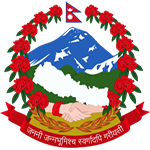Nepal is a landlocked country with a range of climatic zones – ranging from the tropical Terai plains to the alpine mountainous region of the Himalayas. Nepal is passing through a transition following a 10-year conflict, but has made considerable progress in reducing poverty, advancing population health, improving literacy and increasing access to water (World Bank Country Overview, 2015). Despite being globally responsible for a very low proportion of greenhouse gas emissions, Nepal is currently and will continue to be disproportionately affected by climate change. Significant threats of climate change in Nepal include rising atmospheric temperature, changes in rainfall cycle and the impact of glacial lake outburst floods and landslides triggered by climatic extremes. Millions of Nepalese are estimated to be at risk from the impacts of climate change including reductions in agricultural production, food insecurity, strained water resources, loss of forests and biodiversity, reduced tourism and damaged infrastructure and their associated impacts on health (Nepal Climate Change Policy, 2011).
CURRENT AND FUTURE HEALTH RISKS DUE TO CLIMATE CHANGE
Human health is profoundly affected by weather and climate. Climate change threatens to exacerbate today’s health problems – deaths from extreme weather events, cardiovascular and respiratory diseases, infectious diseases and malnutrition – whilst undermining water and food supplies, infrastructure, health systems and social protection systems.
Infectious and Vector Borne Diseases
Climate variability and climate change influence diseases such as diarrhoea, malaria, dengue and malnutrition. In 2014, the prevalence of undernutrition, stunting and wasting among children under five years is 30.1%, 37.4% and 11.3% respectively, and the percentage of children under age 5 with diarrhoea in the last 2 weeks was 12%. The burden of malnutrition and diarrhoeal diseases in Nepal is expected to increase under climate change scenarios. Currently, vector-borne diseases like malaria, dengue, chikungunya, Japanese encephalitis, viceral leishmaniasis, lymphatic filariasis are endemic in the lowland Terai and hills of Nepal with an estimated 80% of the population at risk. The population at risk will likely increase in the future due to the shifting of disease vectors into highland areas, already detected at levels of 2000m above mean sea level in Nepal.
(Source: Climate and health country profile 2015: Nepal)
(Link: https://apps.who.int/iris/handle/10665/246135)



